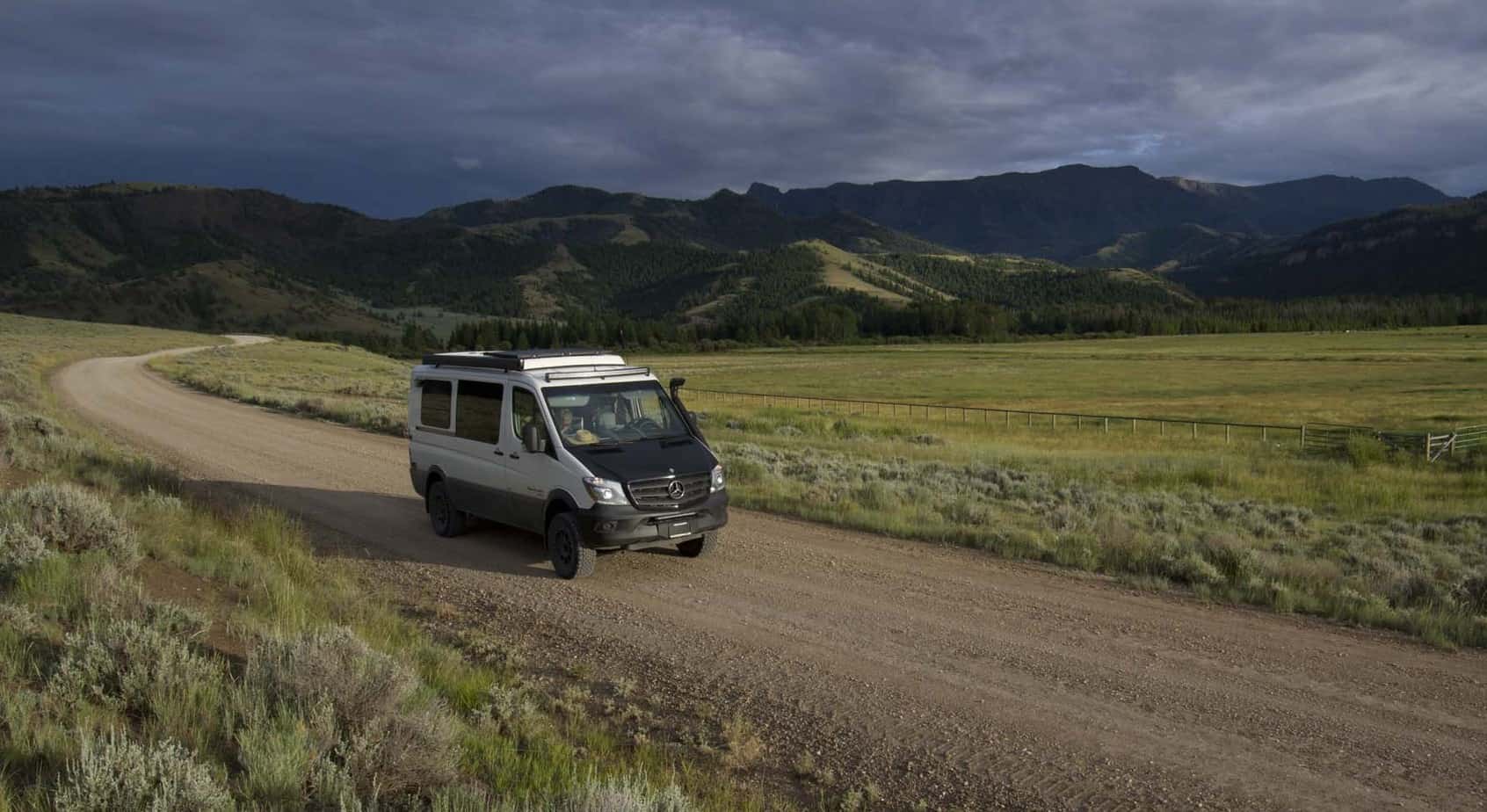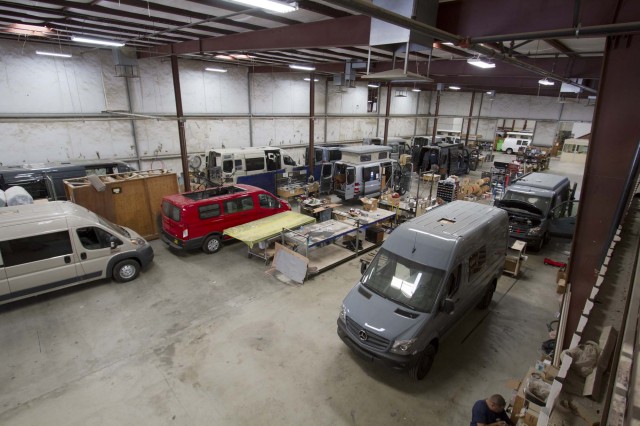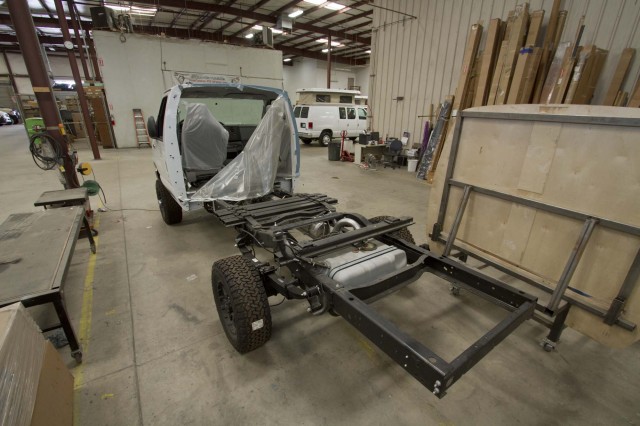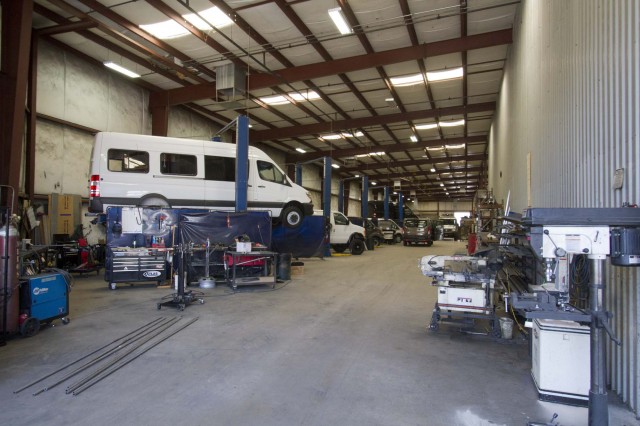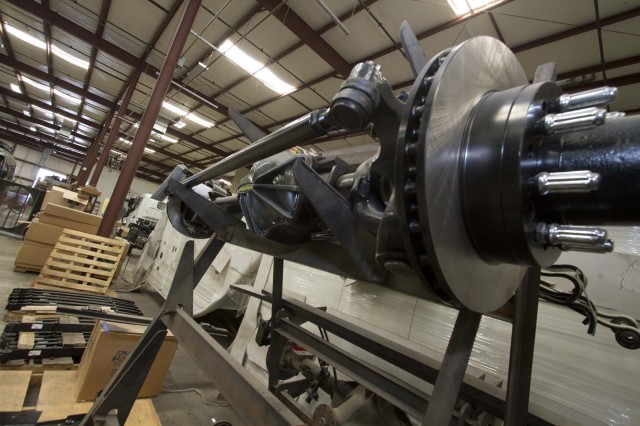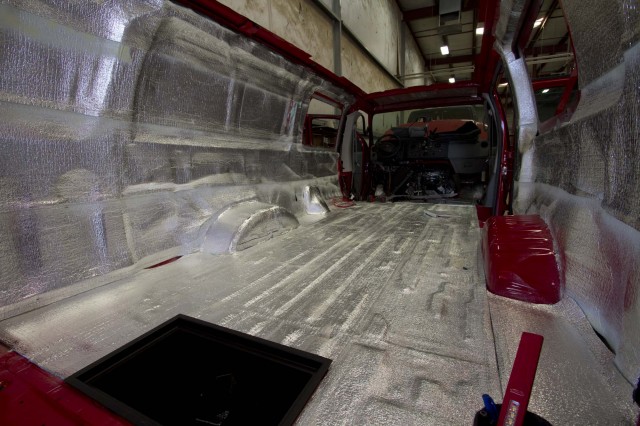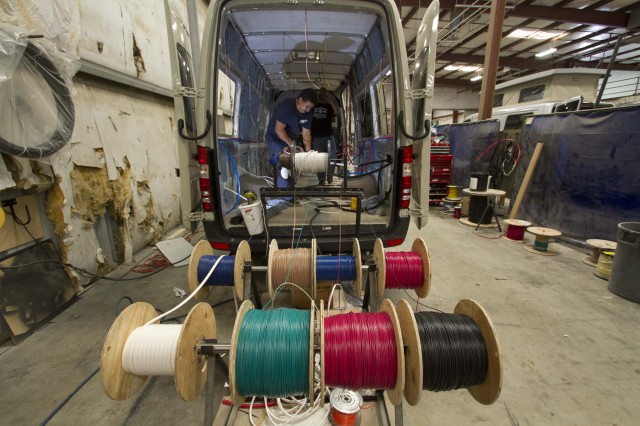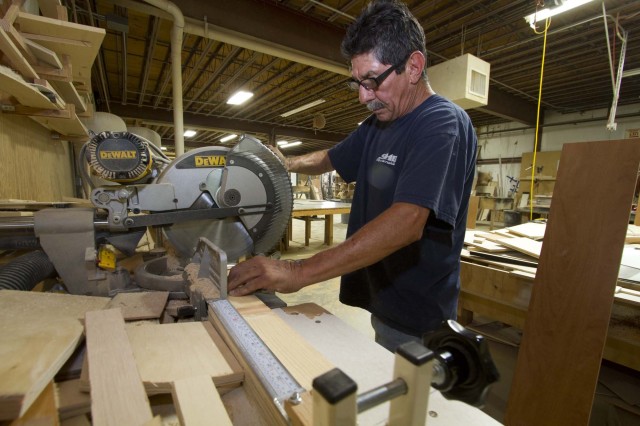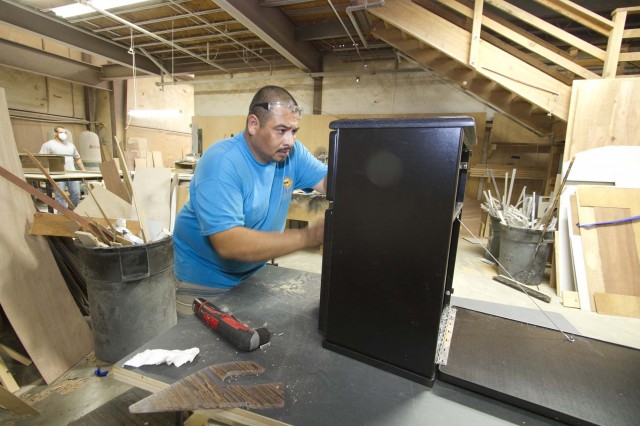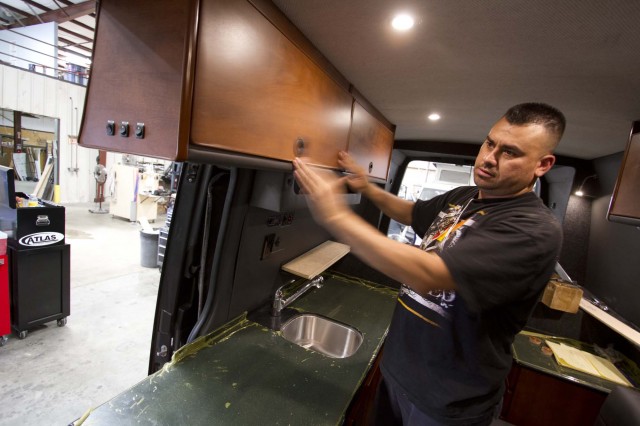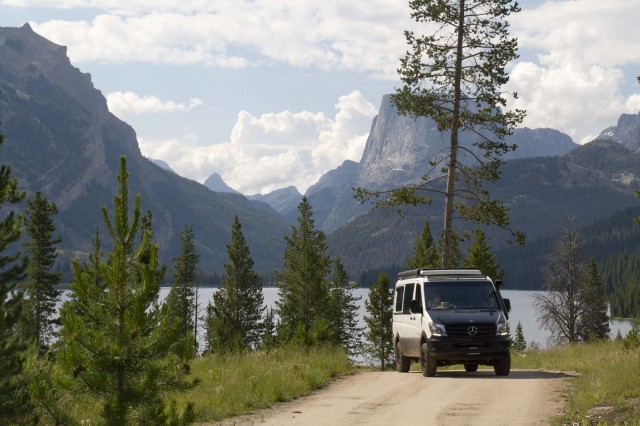I’ve always loved the idea of having a house behind the drivers seat. I’m not talking about a diesel-pusher motormonster (home) that can’t turn around in a football stadium, but the type that is not only practical, but also functional. And, it must have four-wheel drive. After borrowing Sportsmobile’s new Sprinter Mojave 4WD for a 10-day trek through Wyoming, I reluctantly returned the vehicle and had a chance to walk through the company’s Fresno, California, facility (Sportsmobile West).
The front office is, well, not just an office. Looking around revealed dozens of large photographs of adventurous locations and dozens of tastefully mounted magazine articles that transported me to another place; a remote beach, high mountain pass, or desert two-track. A Sportsmobile (or at least driving one for 10 days) is a more than just a vehicle; it is a frame of mind. In the lyrical ramblings of Jimmy Buffet, it induced a change in latitude.
In addition to displaying their current products, Sportsmobile’s showroom features one of their early 1965 VW bus conversions.
Spending a couple of hours with owner Alan Feld was an eye opener. After we stepped through their showroom, which includes one of Sportsmobile’s early Volkswagen Bus conversions, I entered one of the most impressive, multi-tiered manufacturing operations I’ve witnessed. The 66,000-foot plant includes a full-scale cabinet shop, professional upholstery department, electrical and mechanics divisions, and a fabrication bay with a half-dozen lifts.
Because every Sportsmobile is crafted for a specific client, not a wrench is turned until the engineering department has completeed a set of plans and has supplied a detailed work order. Then the fun begins. The mechanic crew first strips the vehicle down, installs the an upgraded suspension and Atlas II transfer case (if requested), and prepares it for the electricians. While the chassis and body are being hardwired, the cabinet and upholstery departments are working their magic on the interior upgrades. Components come together at the assembly line, where a team of Sportsmobile’s 49 highly-trained craftsmen transform a pile of parts into a place you can call home away from home.
Platform choices range from their new Classic Ford Econoline and Sprinter Mojave, to Ram ProMaster and Chevy vans. Just a few of the available options include Dynatrac Dana 60 axles, Atlas II transfer cases, Aluminess bumpers, extended-range fuel cells, and BFGoodrich tires. For luxury accommodation with a 360-degree view, the Penthouse is a must.
Over the years, Sportsmobiles have been cherished by ordinary folks and high-profile celebrities alike. They are the preferred platform for many professional photographers, hunters, mobile veterinarians, athletes, and search and rescue teams. My road trip buddy (in a musical sense) Jimmy Buffet owns several (sea foam green I think; one runs on vegetable oil) and incorporated them into one of his concert tour shirt designs.
The Sportsmobile team devotes an incredible amount of time and thought to designing campers that are comfortable, functional, and personal. I can tell you that nothing is mass-produced. While they do outsource products such as fiberglass tops, suspension and drivetrain components, and windows, all are made a made in the U.S.—most within a few hours drive from their shop. Sportsmobile’s Alan Feld said, “I like to keep things close to home and keep Californian’s working.” They must be doing a good job at it, as there is currently an eight-month backlog on orders. If you are looking to travel with your house behind the driver’s seat, and change your latitude for the good, a Sportsmobile will check both boxes. sportsmobile.com, 559-223-8267
Vehicles arrive from the manufactures as bare cargo vans or cutaway versions.
The mechanics facility has half a dozen lifts and bays where drivetrain modifications are made.
Leaf springs, Dyantrac axles, and Atlas II transfer cases are all built locally in California.
If the assembly line area looks busy, it is. Sportsmobile West produces about 300 units a year.
Fresh from the mechanic’s bay, this interior has been lined with Arctic Cold Weather insulation (optional). A second layer of Denim Green R-13 insulation will be applied for extreme cold conditions.
Electricians meld hundreds of feet of spaghetti into custom wiring looms for each van.
The company cabinet shop employs half a dozen fulltime craftsmen.
Countertops are custom cut for each vehicle.
The entire top floor of one end of the building is dedicated to the upholstery shop.
With the drivetrain, electrical, cabinets, and upholstery is complete they are brought to the assembly line for installation.
The finished product is nothing short of a work of art.
Each vehicle is custom designed for a specific client.
History
Sportsmobile, one of the original American van conversion specialists, was founded in 1961 by Charles Borskey. Borskey’s first project was converting a VW bus into a comfortable camping abode. It was an instant hit, and in short order he had contracts with Volkswagen America, Ford, and even VW Germany (until they copied his concept and began building the Westfalia). After surviving the oil embargo of the 70s, sky-high interest rates of the early 80s, and sever swings in the economy, the company expanded with a second facility in Texas. In the late 80s, Sportsmobile West owner Alan Feld talked Borskey into granting him a license to open a California plant. After more than five decades, the company’s three locations continue to produce some of the finest quality van conversions available.


